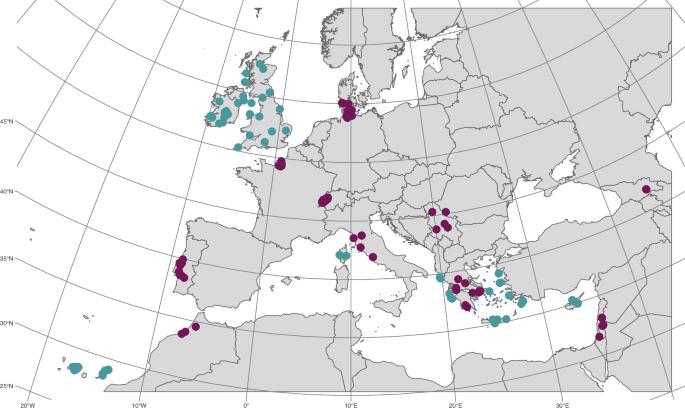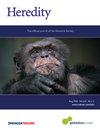大到无法清除:欧洲谷仓猫头鹰(Tyto alba)岛屿种群中持续存在的有害突变。
IF 3.9
2区 生物学
Q2 ECOLOGY
引用次数: 0
摘要
评估特定野生物种或种群灭绝/淘汰风险的一个重要方面是近亲繁殖的状况,但近亲繁殖的起源和当前的变异负荷也是确定种群存活概率时需要考虑的两个关键因素。在这项研究中,我们使用了来自欧洲大陆和岛屿种群的502只仓鸮的样本,目的是量化和比较具有不同人口历史的种群之间的近亲繁殖水平。除了比较近亲繁殖状况外,我们还确定了近亲繁殖是由于非随机交配还是由于种群内的高度共存。我们的研究表明,岛屿的近亲繁殖水平高于大陆种群,而这主要是由于有效种群规模较小,而非最近的近亲交配造成的。我们评估了一个区域在基因组中的自交概率,结果表明,随着该区域中基因数量的增加,这种概率也在降低。最后,我们寻找了岛屿种群中选择效率降低和净化的证据。在岛屿种群中,我们发现中性小等位基因和有害小等位基因的数量都有所增加,这可能是漂移和选择效率降低的结果,但我们没有发现肃清的证据。本文章由计算机程序翻译,如有差异,请以英文原文为准。

Too big to purge: persistence of deleterious Mutations in Island populations of the European Barn Owl (Tyto alba)
A key aspect of assessing the risk of extinction/extirpation for a particular wild species or population is the status of inbreeding, but the origin of inbreeding and the current mutational load are also two crucial factors to consider when determining survival probability of a population. In this study, we used samples from 502 barn owls from continental and island populations across Europe, with the aim of quantifying and comparing the level of inbreeding between populations with differing demographic histories. In addition to comparing inbreeding status, we determined whether inbreeding is due to non-random mating or high co-ancestry within the population. We show that islands have higher levels of inbreeding than continental populations, and that this is mainly due to small effective population sizes rather than recent consanguineous mating. We assess the probability that a region is autozygous along the genome and show that this probability decreased as the number of genes present in that region increased. Finally, we looked for evidence of reduced selection efficiency and purging in island populations. Among island populations, we found an increase in numbers of both neutral and deleterious minor alleles, possibly as a result of drift and decreased selection efficiency but we found no evidence of purging.
求助全文
通过发布文献求助,成功后即可免费获取论文全文。
去求助
来源期刊

Heredity
生物-进化生物学
CiteScore
7.50
自引率
2.60%
发文量
84
审稿时长
4-8 weeks
期刊介绍:
Heredity is the official journal of the Genetics Society. It covers a broad range of topics within the field of genetics and therefore papers must address conceptual or applied issues of interest to the journal''s wide readership
 求助内容:
求助内容: 应助结果提醒方式:
应助结果提醒方式:


